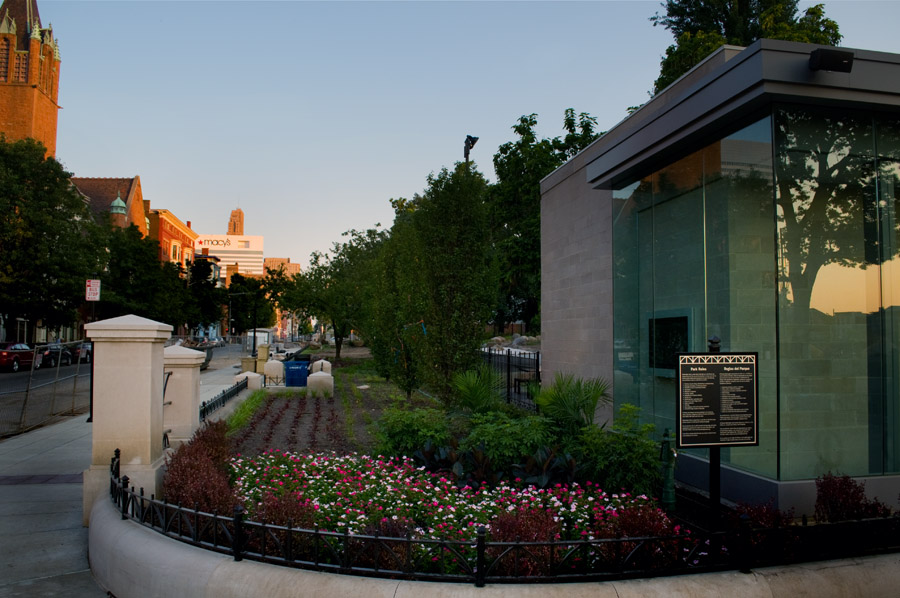Those who frequently spend time in Over-the-Rhine have dealt with the reconstruction of Washington Park over the past one-and-a-half years.
The $48 million growing pains, project officials claimed, would be worth it as the renovated and expanded park would enhance quality of life while also providing 450 new parking spaces tucked neatly underground beneath the park’s new northern lawn space.

Looking south along Race Street at the nearly finished Washington Park. All Washington Park photographs were taken last week by Jake Mecklenborg for UrbanCincy.
Project and city officials will gather with the community on Friday to celebrate Washington Park’s grand reopening. The moment comes at perfect timing as the World Choir Games, and its thousands of visitors, will begin populating the center city this weekend.
New features of the park include an interactive playground, dog park, open lawn space, performance space, and interactive fountains in addition to the overall upgrades made to the rest of the existing features.
The park’s completion marks the end of an era of change for the area that began with the demolition of Washington Park Elementary School, and included the addition of the School for Creative & Performing Arts (SCPA). Those changes, when combined with the future Music Hall renovation and Cincinnati Streetcar, have led to dozens of nearby buildings being renovated into new housing and commercial space.
Those who have not visited Washington Park in some time may want to check it out during the World Choir Games. The new look and feel of the area may surprise you.

